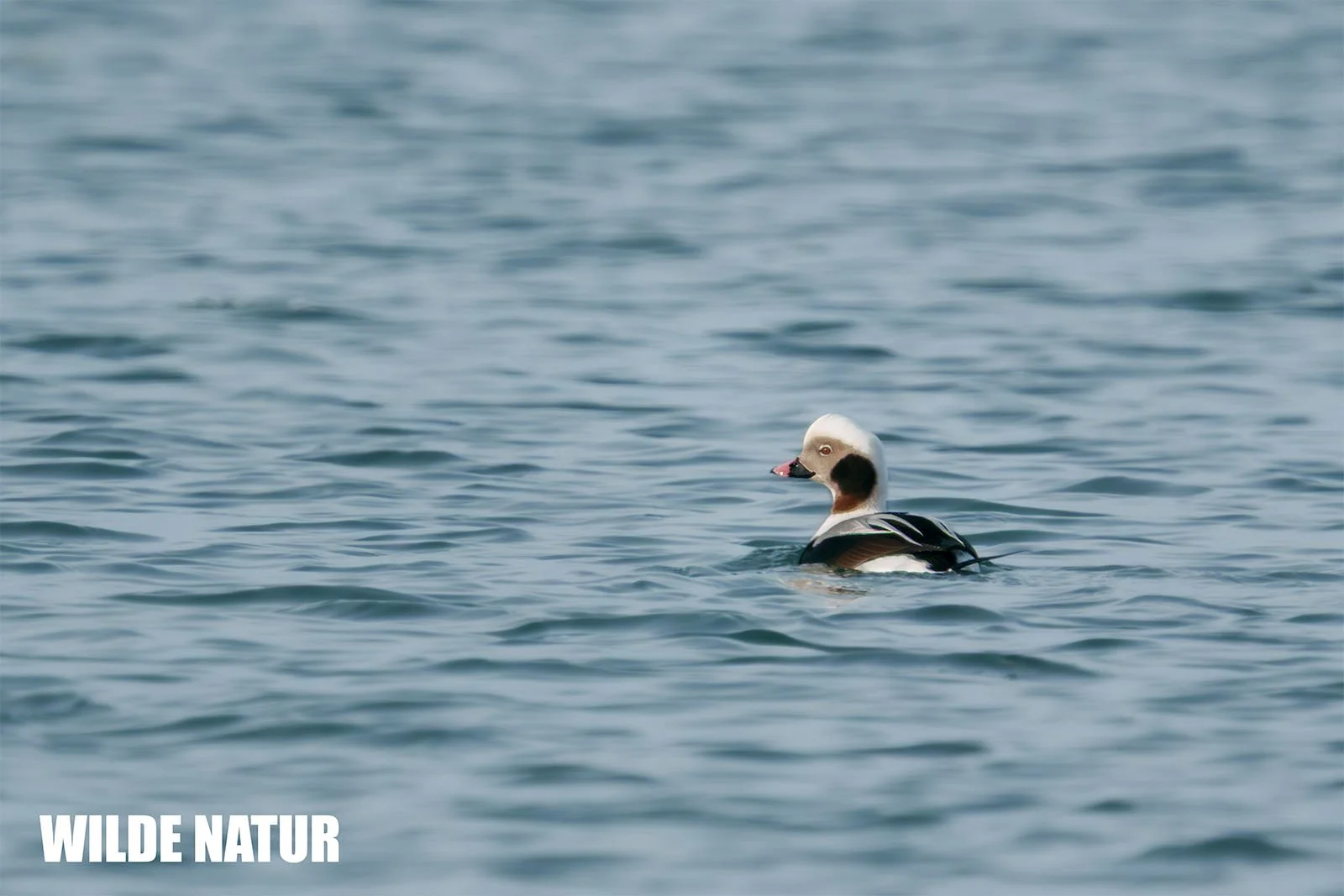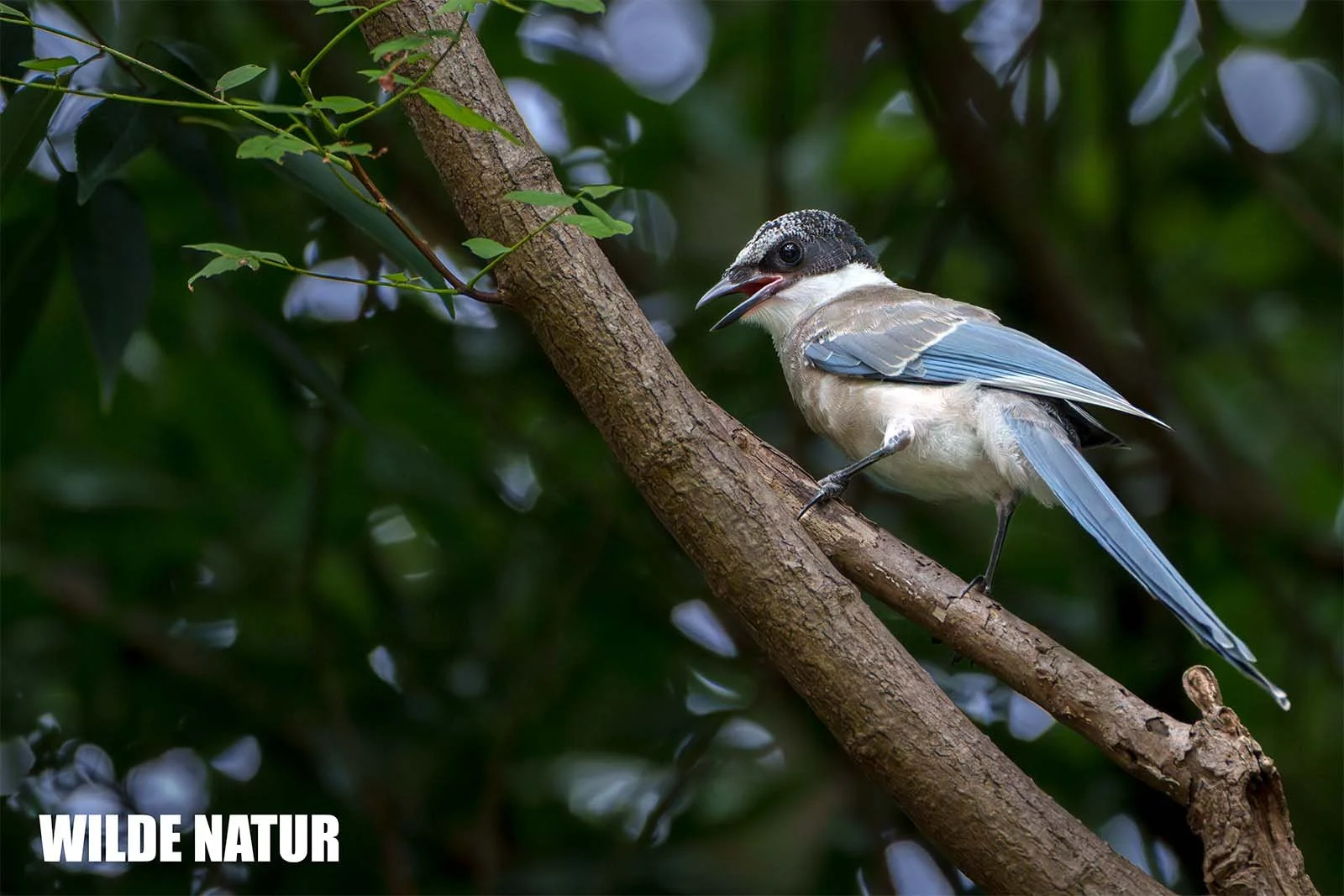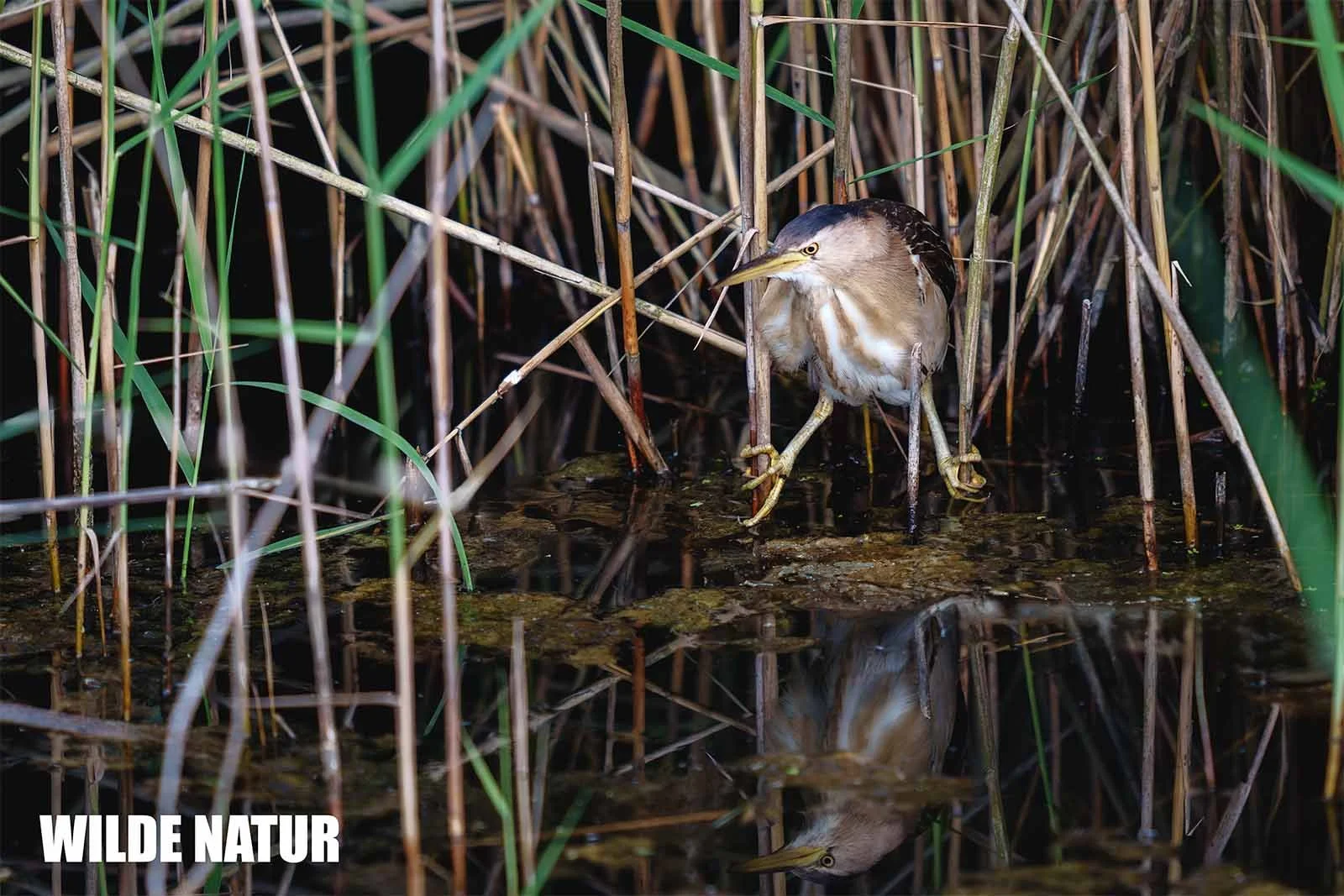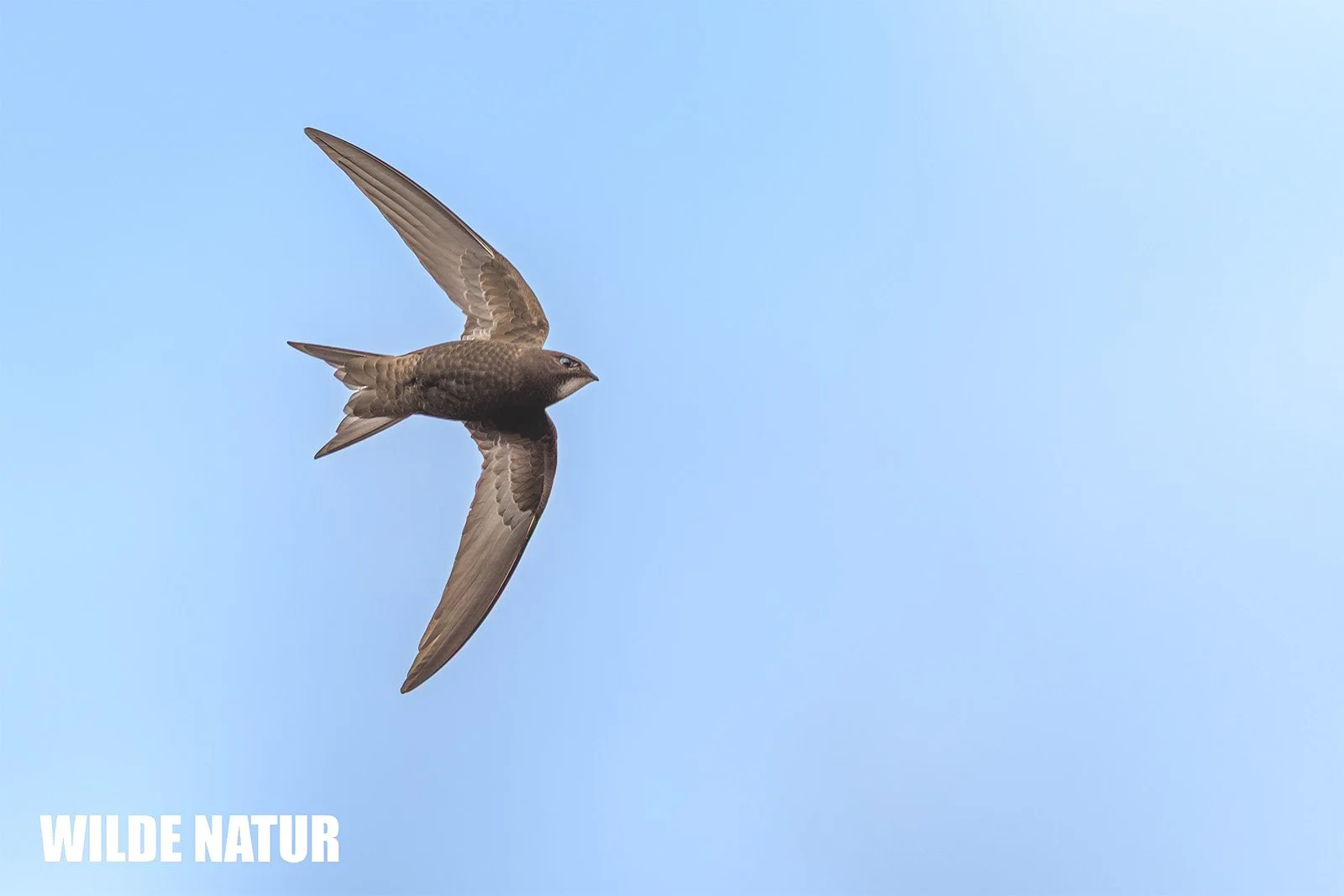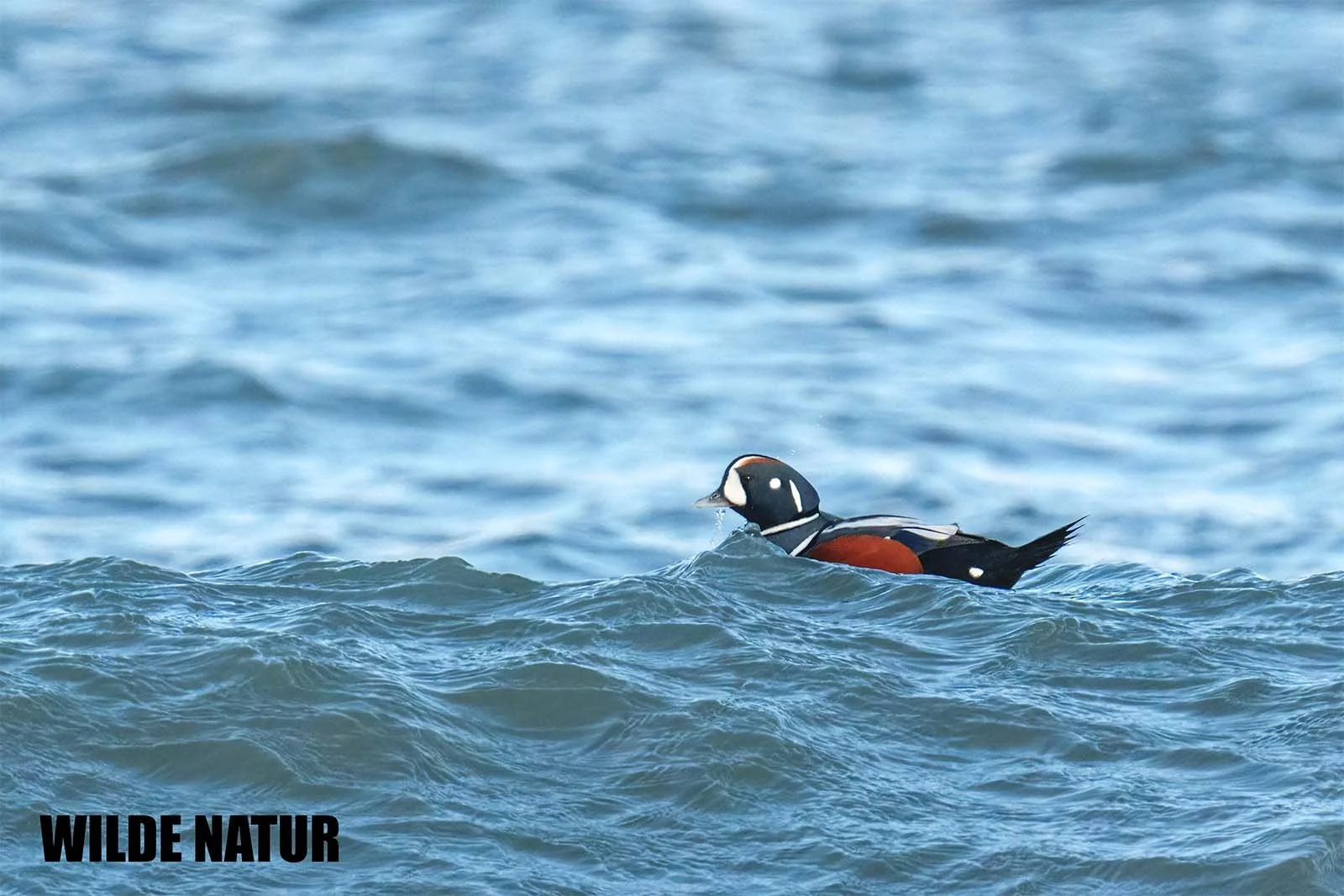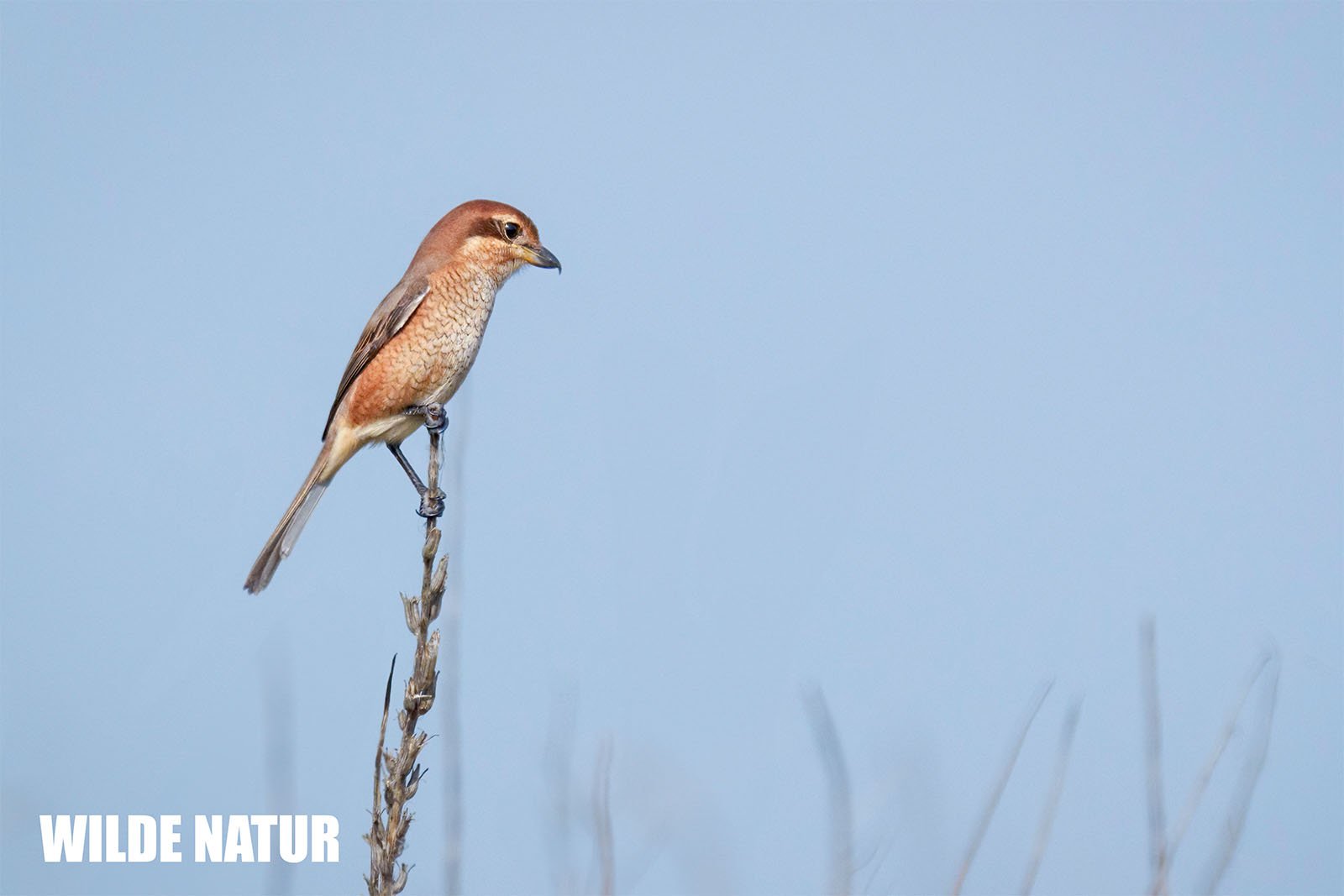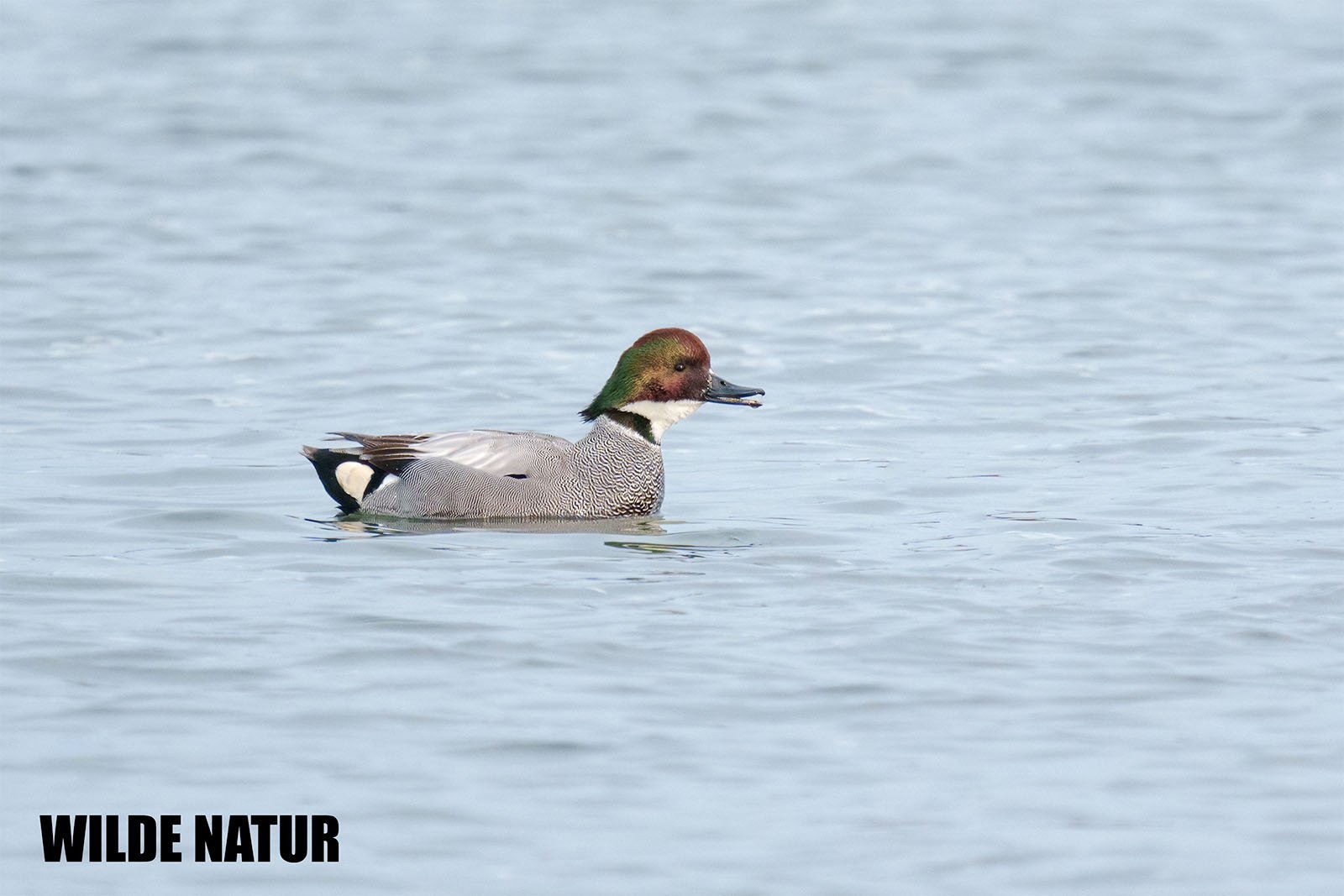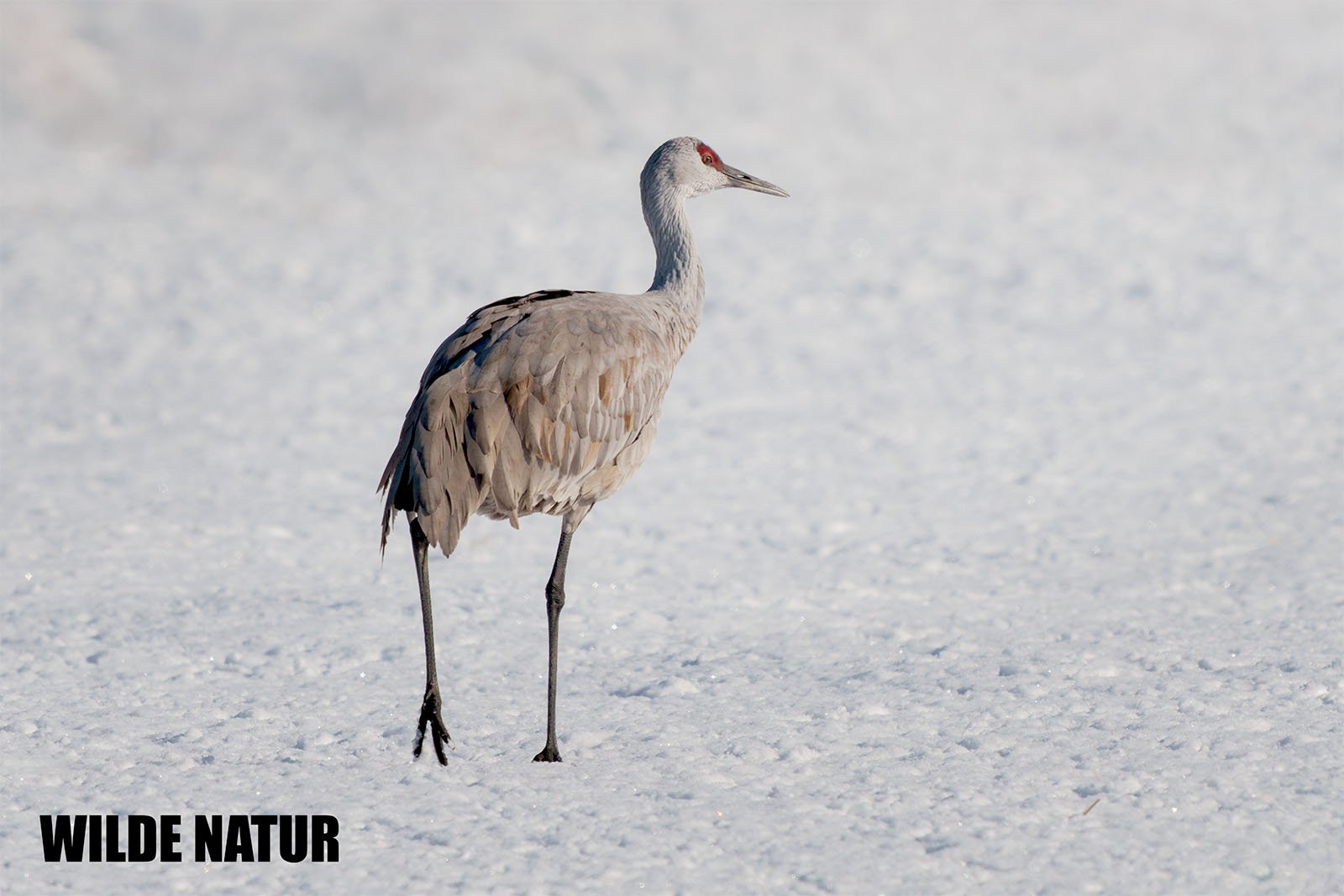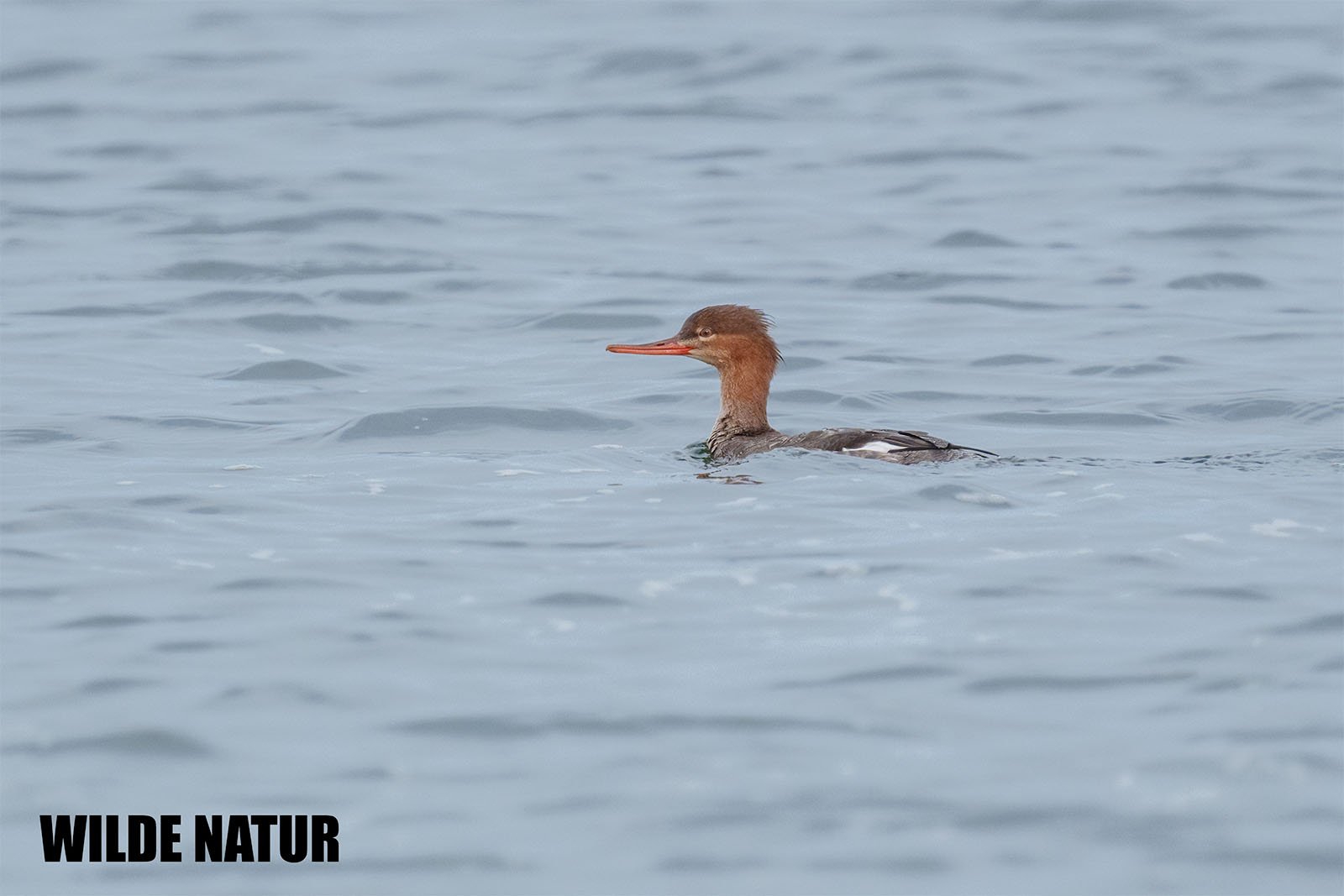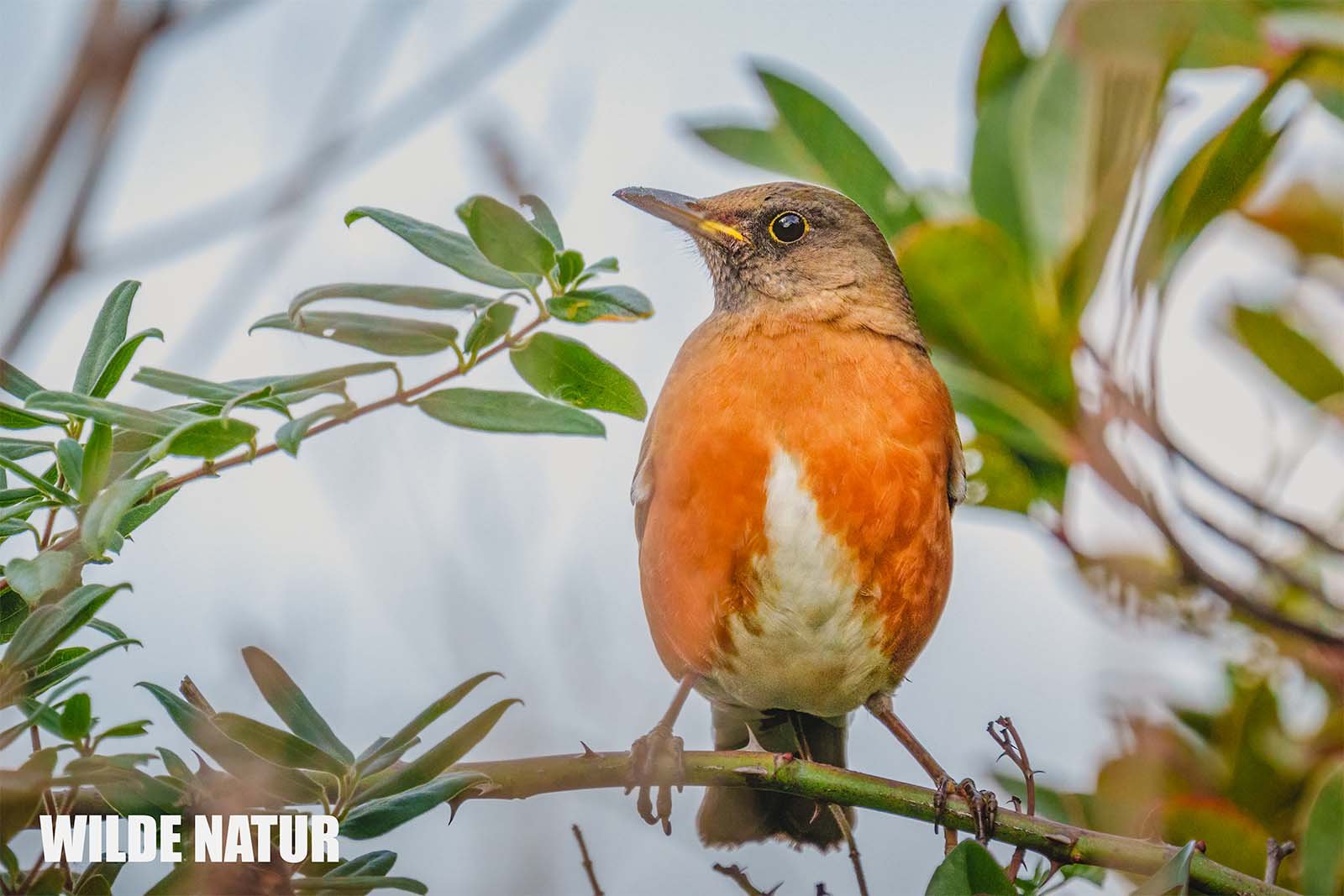Long-tailed duck (Clangula hyemalis)
Long-tailed duck (Clangula hyemalis) with distinctive white and brown plumage swims alone on calm open water. Photo was taken at Hokkaido / Japan.
Long-tailed Duck – Diving Artist of the North
With its snow-white plumage and striking long tail, the Long-tailed Duck is a fascinating winter visitor to Japan’s northern coasts and bays—built for the icy seas.
Shortlist
Distinctive winter duck with long, lance-like tail
Diving expert reaching depths of up to 60 meters
Winter guest in northern Japan, mainly around Hokkaidō
Breeds exclusively in the Arctic tundra
Globally classified as Vulnerable
Scientific name: Clangula hyemalis
German name: Eisente
English name: Long-tailed Duck
Size: 38–60 cm (depending on sex and tail length)
Weight: 800–950 g
Color (♂ Winter): White with black back, face mask, and long tail
Color (♀): Brown and white, rounder body, shorter tail
Bill: Pink with black tip
Diet: Mollusks, crustaceans, fish, worms (diver)
Breeding: Not in Japan; nests in Arctic regions with 6–9 eggs
Season: Winter visitor (November–April)
Habitat: Cold coastal waters, bays, open sea (mainly Hokkaidō)
Migration: Long-distance migrant
Conservation status: Vulnerable worldwide, not threatened in Japan
Table of Contents
- Introduction
- Appearance – Elegance in Black and White
- Habitat – Icy Coastal Waters
- Diet – Diver with Specialized Skills
- Breeding – Far from Japan
- Migration – Wide-Ranging Sea Traveler
- Conservation – Global Concern
- Molting – A Seasonal Transformation
- Visual Description – For People with Sight Impairment
- Conclusion
Introduction
This bird seems tailor-made for cold seas—robust yet graceful, with sharp color contrasts that catch the winter light. The Long-tailed Duck is one of the few ducks truly at home on icy oceans, making it a rare but striking sight off Japan’s coastlines during winter.
Appearance – Elegance in Black and White
In winter, the Long-tailed Duck displays a largely white plumage contrasted by dark patches—a color scheme that offers ideal camouflage against snowy and icy backdrops.
Males:
- Snowy white body with black face mask, chest, and back
- Extremely long, pointed black tail feather resembling a thin lance
- Pink bill tipped in black, dark eyes
Females:
- Softer brown-and-white pattern with a rounded body
- Shorter tail and more subtle facial markings
Both sexes adopt darker, more subdued plumage during the summer months.
Habitat – Icy Coastal Waters
In Japan, the Long-tailed Duck prefers open, vegetation-poor wintering grounds—especially in the far north.
Main locations:
- Hokkaidō (most frequent)
- Occasionally in northern Honshū
Preferred winter habitats:
- Cold bays, harbors, open coastal sea zones
- Occasionally inland waters with marine influence
- Calm, nutrient-rich areas are favored for foraging
Diet – Diver with Specialized Skills
During the cold season, the Long-tailed Duck primarily feeds on marine bottom-dwellers, diving deep in search of food.
Primary prey:
- Crustaceans, mollusks, marine worms, small fish
Diving behavior:
- Dives up to 60 meters—one of the deepest-diving ducks
- Forages on the seafloor, often in small flocks
- Constantly active and agile in the water
Breeding – Far from Japan
Breeding occurs exclusively in the Arctic tundra—far from Japanese shores.
- Breeding season: June–August
- Nesting: On the ground, well-hidden near water, lined with down
- Clutch size: 6–9 eggs
- Parental care: Female incubates; young are precocial and leave the nest early
Migration – Wide-Ranging Sea Traveler
The Long-tailed Duck is a true long-distance migrant, traveling thousands of kilometers each year.
- Arrival in Japan: From November
- Departure: By April
- Typical winter locations: Open sea and protected coastal waters
Conservation – Global Concern
- In Japan: Not considered threatened but uncommon
- Worldwide: Classified as Vulnerable (IUCN)
- Major threats:
- Climate change impacting Arctic breeding zones
- Oil spills and degradation of marine habitats
- Disruption by shipping and coastal development
Molting – A Seasonal Transformation
Long-tailed Ducks undergo a striking annual molt that changes both their coloration and silhouette. Males shed their long tail feathers outside the breeding season and regrow them before winter. Their plumage transforms from dark summer tones to sharp black-and-white winter contrasts. These molting periods are often synchronized with migration and take place in sheltered coastal zones.
Visual Description – For People with Sight Impairment
Picture a bird that looks like a brushstroke on water: its body snow-white, contrasting sharply with deep black wings and chest. The male's long, needle-like tail trails behind like a fine ribbon. Its face features a dark mask, while the bill is soft pink tipped with black.
The female appears rounder and softer, with blended tones of brown and white. Silent and graceful, the duck dives without a splash, staying underwater for long periods before resurfacing with a small mollusk or crab—seemingly born from the sea itself.
Summary long-tailed duck (Clangula hyemalis)
The Long-tailed Duck is more than a seasonal visitor to Japan—it’s a northern specialist, built for frigid seas and long journeys. With its exceptional diving skills and stark beauty, it brings a quiet sense of the Arctic to Japan’s coasts. Its vulnerable global status reminds us of the delicate balance of marine ecosystems and the far-reaching effects of climate change.

